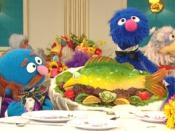Even with the hundreds of cable stations there are today, it is not easy to find a TV show that truly promotes tolerance and diversity the way Sesame Street does. This paper will illustrate why Sesame Street is so unique when it comes to topics of culture. Specifically, the paper will explain how it attempts to address diversity represented in the American landscape. It will also address to what extent the media relies on stereotypes when depicting a certain group. Lastly, an assessment will be made on whether or not the author believes the television show fosters a better understanding of diversity and multiculturalism.
Sesame Street BackgroundMost American that were brought up during or after the 1970's are not just familiar with Sesame Street, but probably grew up on it when they were in preschool. Sesame was originally created to help inner-city children tools to help with their education via the most popular media method - TV.
It is today one of the most influential children's' educational programs, imbedding themes of cultural diversity, sharing, and building self-esteem through puppets, actors, humor, song and dance, and real life situations they can understand. One of the five goals of the show is listed in the PBS website as "â¦encouraging children to appreciate cultural diversity by modeling people who differ in appearance, action, or point of view playing together, working together, making friends, and resolving conflicts." (PBS, 2003-2007)Addressing DiversityLooking at the appearance of the neighborhood of "Sesame Street," it is set in a brownstone architecture looking like New York City, with different types of muppets and people living there, which is very similar to the melting pot of cultures in the real life NYC. They showed all walks of life living there: African-Americans, disabled people, Native Americans, young people, senior...



Nice
thank you for the idea on a media essay on this topic.
0 out of 0 people found this comment useful.